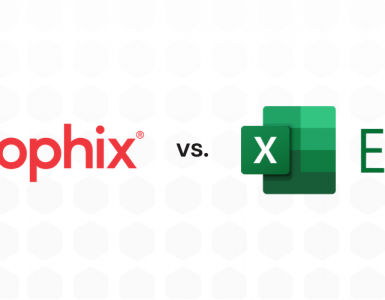What are CFOs doing thinking about business strategy? Should finance leaders focus on the financials and let the CEO steer the company? Is all this talk about ‘becoming a strategic advisor for the company’ moving the office of finance away from its core strengths?
All of these questions are common responses to the changes that are transforming the CFO role. But let’s take a step back. The CFO office has always been strategic. The annual budget is absolutely a forward-looking document: It’s a roadmap to the business’ goals.
Automating more operational tasks, and using data to drive more strategic ones, isn’t a fundamental shift in purpose. It’s the natural evolution of the office, embracing and expanding on the CFO’s most valuable set of skills.
Of course, this change of emphasis isn’t without its challenges. To help you start moving your team to the strategic side of things, we talked with James Myers, Founder & CEO of FP&A Strategy Consulting.
James has spent the last six years advising CFOs on how to become strategic leaders in their businesses. In this Q&A, James discusses everything from training to hiring to day-to-day strategy.
Q&A on AI in Finance with FP&A Consultant James Myers
Prophix: Let’s start with the big question: Have finance departments started to embrace AI and machine learning? What is the level of adoption that you’re seeing?
James: Machine learning and AI are being adopted, but at a very slow rate. when you look at divisions like marketing and sales where there’s a lot more data, naturally it’s been a place where there’s been a lot of investment in AI. When we look at finance, we’re not seeing as much of an investment in AI. One of the challenges we’ve always come back to is, what is the return on investment for a finance organization?
One area we do see adoption of machine learning is in collections. One of the projects that I’ve been working on involves understanding cash collection and understanding the impact of how we can collect cash faster.
So it’s really about using AI to build out an understanding and a prediction of the cash cycle of collections. We’re also planning to apply that AI to payments as well.
So, there are opportunities out there for AI and machine learning to play a bigger role where we see big volumes of data. But it becomes more and more difficult when you start looking at areas such as forecasting, where you’ve got quite a smaller amount of data to look at and analyze. That’s where the challenges are.
Prophix: Is it just the difficulty proving ROI that is holding back adoption? Or are there additional obstacles to overcome?
James: Another big challenge is understanding what the use cases are. If you look at a finance organization, there are a lot of areas that they touch.
The challenge that we are having is figuring out what are the use cases where we can start to apply AI, and once we’ve figured out those use cases, what is the return on investment?
In the case of the accounts receivable collections process, knowing what you’re expecting to collect from your accounts receivable two or three days before the end of a quarter can have a huge impact on what your cash is.
There are a lot of levers you can pull, payments that you can push out, that can have a major impact on your cash flow. So, in that case, the ROI was definitely there and we’ll continue to do the investment on that.
The other challenge with adoption is just the cost element of it. Hiring data scientists is an expensive thing. And what we’re finding is that you end up hiring a data scientist who’s only spending 10 to 20% of their time on data science. The other 80% is collecting and validating data.
You don’t want your data science teams to be spending too much time on very low-end work. You want to get them focused on the high-end work. But just being able to get the quality of data in an organization can sometimes be challenging. Especially as an organization is growing up, they acquire companies, they have different systems, data is all over the place.
One of the examples is, we were looking at accounts receivable data. And we were looking in 11 different ERP solutions, where different organizations had been acquired and they each continued to maintain their accounts receivable on their own solution.
So, collecting all of that data in one place has been an extremely difficult challenge, especially because the taxonomy of each ERP system is slightly different.

Prophix: How can finance leaders really embrace their role as a strategic advisor, connecting business to strategy to data?
James: When I started FP&A Strategy Consulting, this was part of our vision. Historically, finance has always been very backward-looking, looking at how we performed in the last quarter in the last year, why are we missing our targets and things like that. But as the evolution of finance is changing, there’s more of a requirement of CFOs to start to look more into the future. They need to understand what uncertainty there is and how they start to plan against that uncertainty. And we see that this combination of strategy, business and data is critical in being able to drive business forward.
So, just so I can touch on each one of these: Strategy is really divided into three areas. It’s firstly diagnosing the challenge or challenges that the corporation has, figuring out what are the big hurdles are that the corporation needs to overcome to be even more successful.
Now, this is often very, very difficult. It’s easy to point out the challenges that your competitors have, but sometimes it’s very difficult to look inward and understand the challenges your organization is having.
Once you understand these challenges, then it’s using the guiding principles of the organization that have already been set out to figure out how to overcome those challenges. Now, this is typically done by a strategy organization, but the more that finance can get involved in the work, the better. Because finance has a lot of value to add to this area.
The third part of strategy is designing coherent actions to overcome the challenges. This is when it becomes critical for finance to be involved. What are the actions that the company is going to take to be most successful?
Once you understand what these actions are and you’re able to drive those actions, they will end up in a plan or a budget of some sort. Or, even with finance working as a business partner to drive those actions throughout the company.
The second piece of the puzzle is the business. Once you’ve explained the actions that need to be taken to drive a strategy to overcome the challenges, it’s understanding from the business what their needs are. Not just defining what Excel spreadsheets they need or what dashboards they need, but really spending the time to define the problem statement of where their challenges are.
And once we’ve been able to understand what the real problem is, it’s sourcing the data and being able to interpret and build insight from that data that really helps to shed light on the problem and potential solutions.
It’s important to get these in the right order: It goes strategy, business, then data. What we see a lot of at the time is people get hold of a whole bunch of data and then they push it down to the business, without thinking about what real problems they’re trying to solve.
When you get to the data part, it’s about providing insight that drives action. There’s no point creating a dashboard or a presentation that gives you a whole lot of data to share with the organization. You want to be able to have data that really provides insights that then provide a course of action.
And then to complete the circle, once the organization and the finance team has gone through that process, they feed back into the strategy. So you can see how that cycle continues to go around.
Prophix: How can finance departments get more into that strategic role, do it better and more efficiently?
James: We should be looking to say, “When we go through our budgeting process, that’s really about how we disseminate the strategy down into the business.” Finance needs to take a larger seat at the table when it comes to strategy and really help to drive it. Because they have the insight and the data and the knowledge across all the areas of the business.
It’s being involved in that early stage and then driving that down into something that can be consumed by the organization. The budget, in other words. Once that budget is decided then it’s seeing how we’re tracking to that budget.
But if you understand the strategy behind why that budget was created and where the company is going, it makes it far more effective when you’re starting to do your comparison of the forecast versus the budget.
The other piece is for finance to become more part of the business and be part of those conversations. Historically, finance has always been a back office organization. They’ve been typically locked off because they have very confidential information. But nowadays, that finance needs to start getting involved closer to the business.
Some of the roles that I had, I would spend at least one day every two or three weeks with the sales team attending customer meetings just to get an understanding of the challenges that the customers are facing, the sales teams are facing.
You’re able to provide a lot more value when you understand the strategy of where the company is going and where they’re driving towards. Being involved and having those conversations and getting in front of your customers is critical. Whether they’re your internal customers, your sales team, your marketing team, or your external customers that you’re currently selling to.
Prophix: When finance leaders are staffing up for this transformation, what skills should they be looking for?
James: When we see new people coming in, I look for people who are action-oriented. I don’t want to have people who just producedata for the sake of producing data. I want people who are questioning: Why are we producing this? What value does it have? And then working with the organization to understand their problems.
The other area is the soft skills. It’s being more empathetic. When of empathetic, it’s really understanding the challenges from somebody else’s perspective. it’s very easy in finance to say that we know everything because we’re in the center of everything, but sometimes it’s worth spending the time to think of yourself in the shoes of the salesperson or a marketing person.
It’s a soft skill and it takes practice and learning, starting to ask those questions and get a deeper understanding of the challenges that these people have. That’s how you can start to add value.
We talk a lot about business partnering and being a partner for the business, but unless you have that empathy and understanding, it’s very difficult to actually provide real value to that business partner.
And the third one is being prepared to fail. We always try to sweep away failures and focus on successes. But the idea of data and data science and analytics is about failure, that you learn more from failing at something than you do by succeeding. It’s a shift in mindset away from always succeeding to these step-change improvements that you get from failing, trying something, failing and then figuring out why it failed.
Machine learning is doing this already , and we’re going to lose at the game unless we get better at this. The way that machine learning works is it has a set goal and fails thousands of times before it exceeds that goal.
That’s one of the big advantages of machine learning, it’s learning by failing. That’s something we can relearn from the machines: Failing isn’t all that bad if we learn from it.
[bctt tweet=”As #machinelearning teaches us, failing isn’t all that bad if we learn from it. @fpastrategy” username=”Prophix”]Prophix: How can finance leaders help their teams prepare for the digital transformation, with that change management?
James: In my experience, transformation starts with executive support. Without executive support, any transformation will fail. So, make sure that the CFO is 100% bought into it and will support the team in being able to go through that transformation. That’s the biggest step that needs to be taken.
It’s also about setting the culture and being able to set a culture of actionable insight, but also that culture of willingness to fail.
And the final thing that I see is the willingness to experiment. Historically, finance has been very conservative in the way that they approach change. CFOs who are more willing to experiment and try things out will be more successful. They’ll be able to see what works and what doesn’t.
[bctt tweet=”CFOs who are more willing to experiment will be more successful. They’ll be able to see what works and what doesn’t. @fpastrategy” username=”Prophix”]James Myers is the Founder & CFO of FP&A Strategy Consulting. You can follow him on Twitter and LinkedIn. For more insight from finance and AI experts, check out Adapt & Innovate: AI and the Next Evolution of Finance.






